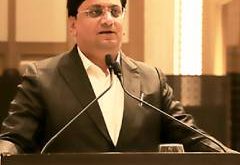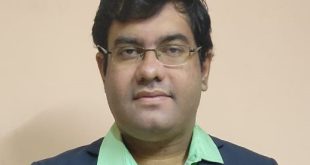Proactive launched its operation with an investment of Rs. 1 lakh, 18 years ago. Starting with products in the field of communication, Proactive added different products to the portfolio, start focusing on structured cabling, and were the second AT&T system integrator in the North. They moved on to products cable tron, switches and routers. In 2002, Proactive became a premier partner to Cisco and moved to being the premier select partner and then silver partner. A year ago, the company became a gold partner to CISCO. Rajiv Kumar, MD & CEO, Proactive, shares his growth trajectory with ITPV
- What is the present focus of the company? What are the solutions you are offering?
Over the last 2-3 years, our focus has been completely on IT Infrastructure. We deal in data center products, servers storage and the full range of Video and Unified communication. Therefore, we do voice products, video products, AV, full conference room projects, network security, switches and routers under IT infrastructure. In addition, we do structure cabling and surveillance and have recently added complete data center build-outs.
As a trusted system integrator, we buy products from different companies, put them altogether, create a single solution for the customer, and maintain it. We work with multiple principles but a large portion of the business happens with Cisco- for our unified communication specialization with whom we are an advance technology partner for Telepresence. This means we do the entire range of Telepresence video system for Cisco and includes small desktop system, larger system for conference room.
Our key principals, therefore are, Cisco, Juniper, Radware, Panduit, Commscope, Tyco, Schneider, EMC, NetApps, Citrix.
- Which are the potential verticals?
Traditionally, we have done the best business in IT/ITES companies and that is where bulk of our business comes from. Last year we expanded our base to Manufacturing, Education and Media verticals. We have not been very strong government player but we are not blocking ourself from this segment and personally believe that this segment will grow. I also feel that this segment will become more professionalized in future. We definitely want to contribute to government projects but clearly if there’s a value add. We considered ourself as an engineering company and looking for pure trading kind of deals where as looking where lot of engineering value add is attached to it.
At present, 65-70% of our revenue comes from IT/ITES, education followed by manufacturing also contribute a part to our total revenue. However, I think that over time it would change and manufacturing will increase as I see lot more activities happening in the manufacturing sector.
- What is your approach to these vertical?
Every vertical we find has a different need. IT/ITES verticals really looks for agility and speed so very often they are quite happy with the smaller partners due to the advantages of quick turn-around, better service, etc. Every vertical has a different need, like education, projects are slower but each one has a different way. In education you tend to sell security products so we find that we need more expertise in those areas. In IT/ITES switching, routing, structured cabling is important.
We believe in approaching the end users directly. We do not do sub contracts. As the market size increases and we will need to farm for new customers, our approach to build new customers will change. In the last few months, we have built a cold calling system, created a marketing department who calls customers directly and finding their requirements, putting it to the sales team. They are also doing other things like e-mail, seminar shows. We are looking at different marketing products to reach out to customers.
- How have your developed the go to market strategy?
Sales has a huge role to play starting from cold calling, to finding new customers, solutions, closing, collecting. Therefore, by better creating better systems in the company, we are trying to fix the job of finding new customers to the marketing team, so go to market to that extent can change and the sales people can focus more on deals. They can follow on qualified leads, work on them and try to close them. We give them a more focused approach so that their productivity increases.
We also do roadshows and seminars, but need to do more on participation in trade shows. This time especially for video and UC we would participate in a trade show. Since the effectiveness of seminars is declining, we have to plan better ways of reaching out to people. We have also done lot of work on our website, using search engine optimization, Google ads and various mixes of marketing products to make sure that our brand catches attention, and we manage to clinch deals in time.
- What are your expansion plans? Where is the growth coming from?
Technology wise we are expanding to get into Hybrid Cloud. Geographically we have three branches in Delhi, Pune and Bangalore and we will put up more branches in future.
For our business we are looking at Mumbai, Hyderabad, and B class cities, Andhra Pradesh and Chandigarh, Chennai.
Growth is coming from SMBs; we are finding that segment growing faster than the large customer does. We consider ourself as the medium size player and its business is growing in manufacturing, education. We closed at Rs. 79 crores last year and this year we are aiming for above 100 crores, to see a growth of 25-30%. Last year we grew 40% so it is possible. We have added lot of technologies which has helped in good growth for us.
- What are the trends you see in 2015?
The most significant trend for 2015 is cloud. This year we will see a rise in demand for hybrid cloud, business in private cloud, virtualization, desktop virtualization, vast improvement in bandwidth availability leading to growth in video, wireless will grow. Thus, mobility is promised to grow and we see a future in surveillance, smart cities, and physical security business. Though I would like to add that traditional technologies like switching, routing, servers could be little stable.
 Latest Technology News Today – Get Latest Information Technology Updates and Services Latest Technology News Today – Get Latest Information Technology Updates and Services
Latest Technology News Today – Get Latest Information Technology Updates and Services Latest Technology News Today – Get Latest Information Technology Updates and Services 









